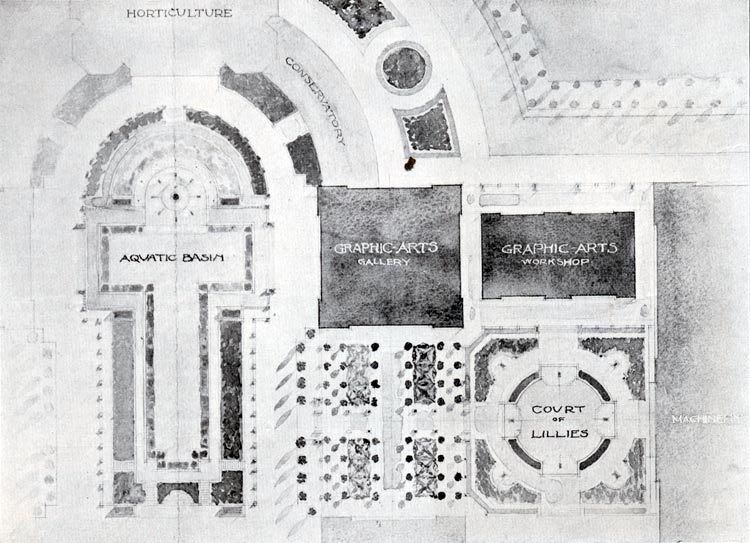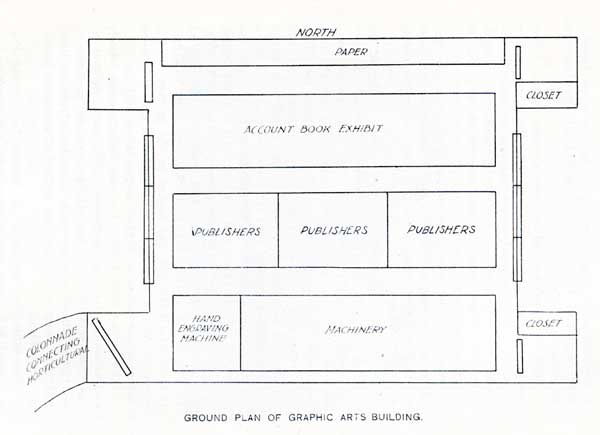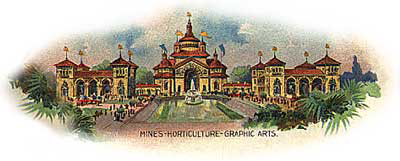Like its companions in the western Esplanade,
the Graphic Arts was designed by the Boston architectural concern, Peabody
& Stearns. It was similar in appearance to Mines Building, which it faced
across the fountains of the western Esplanade.
The Graphic Arts Building was linked to the Horticulture Building by the connecting
North conservatory which was used as to display wines, spices, mineral water,
liquors, etc. The Graphic Arts building, also called the "Gallery" to differentiate
it from its companion building, the Graphic Arts Workshop, housed exhibits
of printing, paper, inks, illustrations, engraving, lithographing, etching,
bookbinding, and machinery used for these. The nearby Graphic Arts Workshop,
across the canal, was used for printing and publishing of the Exposition newspaper
and daily exposition programs during the Exposition.
Among the exhibitors were Crane Brothers (paper), International Paper, Leslie's
Publishing, Doubleday & Page (publishers), Funk & Wagnalls (publishers), Niagara
Paper Co (paper), J.N. Matthews Co (Buffalo Courier and Matthews & Northrup
Printing), The U.S. Playing Card Co., Western
Bank Note Co.
In the Workshop were machinery by Niagara Envelope Co, Electric City Engraving
Co (photo-engraving), Dow Composing Machine Co, Eagle Ink Co, Oswego Machine
Works (cutting machines).
The Horticulture/Mines/Graphic Arts buildings were the western half of the
first series of buildings a visitor encountered after traversing the Triumphal
Bridge. Director of Color C. Y. Turner's general plan was to have the color
of the buildings reflect their position in the evolutionary journey of civilization.
These first buildings, according to Turner, were to be in colors "crude and
strong". (The other end of the grounds, culminating in the Electric Tower,
represented the refinements and achievements of humankind; their colors were
brighter and/or more vivid.)
Observers described the roofs of these three buildings as "medium dark terra
cotta" and the exterior walls as "orange" or "a warm buff color" with "details
of brilliant blue, green, rose, and yellow."


|


